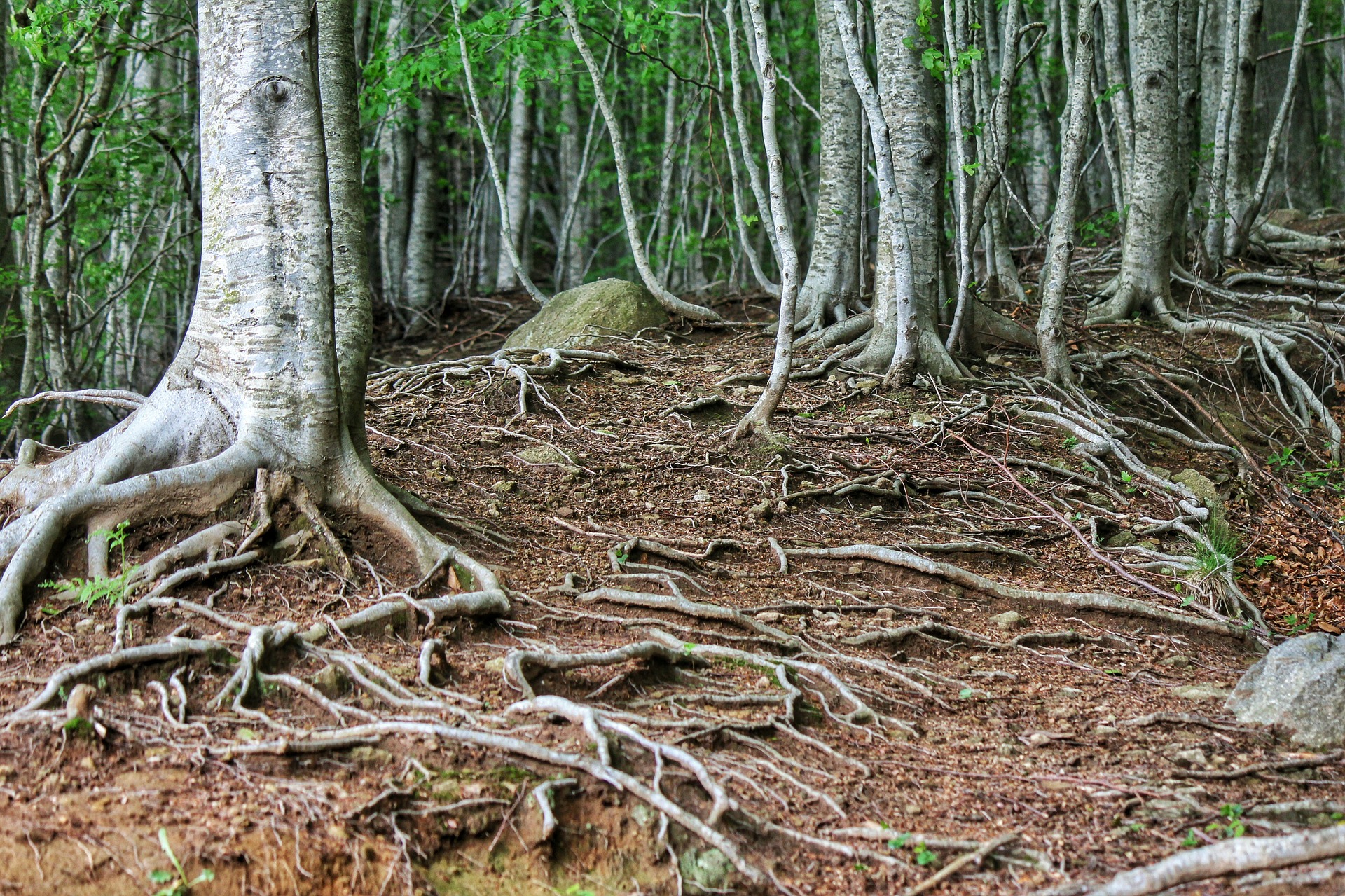Carbon dioxide (CO2) concentrations in our atmosphere continue to rise, and global warming has transitioned from a possible future phenomenon to a present environmental reality. Given this reality, scientists are motivated to improve calculations of how much carbon there is on Earth and how it flows from the biosphere to the atmosphere and back to the biosphere. This understanding of how carbon moves through our Earth system will help scientists develop better strategies to mitigate the effects of global warming on our natural and built environments.
On land, much of the carbon in soils originates from plants. Recall that during photosynthesis, plants take in CO2 from the atmosphere and convert this carbon into sugars to enhance plant growth (an example of a carbon flux from the atmosphere to the biosphere). Then, when these plant tissues die and begin to decompose, the carbon again moves from one pool to another. Some of the carbon will be released back to the atmosphere, but about half of the carbon from the decomposing plant will get incorporated into the soil. This movement of carbon from the atmosphere, to the biosphere and then eventually to the pedosphere (the soil) is fundamental to the global carbon cycle. To understand this cycle, we must be able to estimate how large the plant carbon pool is.
Thanks to a wealth of studies by molecular biologists, plant physiologists and ecologists (among others), we now have a detailed understanding of how plants take CO2 from the atmosphere and transform it into energy to build more plant biomass – photosynthesis! We can also estimate how much carbon is stored in plants above-ground in stems, branches, and leaves relatively easily. For example, foresters take measurements such as plant height, trunk diameter, and canopy coverage to estimate above-ground plant biomass in a given forest. Satellites can provide similar estimates at larger scales by measuring the “greenness” of the land. Together, these tools help us estimate the flux of carbon from the atmosphere to plants above ground.
But what about the other half of plants that’s hidden below ground? Plant roots can make up anywhere from 10-90% of a plant’s total biomass, but because roots are buried underground they are much harder to measure and study. Yet, if we want to improve our estimates of the pool of carbon in plants, we can’t ignore these clandestine roots! After all, nothing worth doing is ever easy, right?
My research as a Ph.D. student in Biology at Indiana University is focused on one small – but important! – piece of the global carbon cycle puzzle. As an ecologist, I like to think about the role plants play in moving carbon around our ecosystems and how this affects the global carbon cycle. And specifically as an ecosystem ecologist, I think in terms of pools of carbon (how much and where the carbon is stored) and fluxes of carbon (how much and how fast carbon moves from one storage area to another).
At IU, I’m looking at how plant root characteristics (e.g. size and shape) vary among tree species that are common to eastern U.S. forests. I am working to understand how different tree species affect the flux of carbon from plants to the soil. Unlike leaves, which only add carbon to the soil once they die, fall to the forest floor, and begin decomposing, roots contribute carbon to the soil both as living roots and when they die and decompose. So, I am using a combination of experiments in our fabulous IU greenhouse (below) and in the natural forest to estimate how the pool of carbon in tree roots varies among species, and then, how these differences may translate to differences in the flux of carbon from plant roots to our forest soils.

Have I convinced you that understanding basic characteristics of plant roots matters if we want to predict the size of global carbon pools and fluxes? My experiments are underway and I look forward to sharing some of my results later this year with you. Until then, next time you go for a walk take a moment to look down at the ground, use your imagination and paint a picture in your mind of what the neighborhood tree’s roots look like below ground.
Edited by Maria Tiongco and Riddhi Sood


Leave a Reply